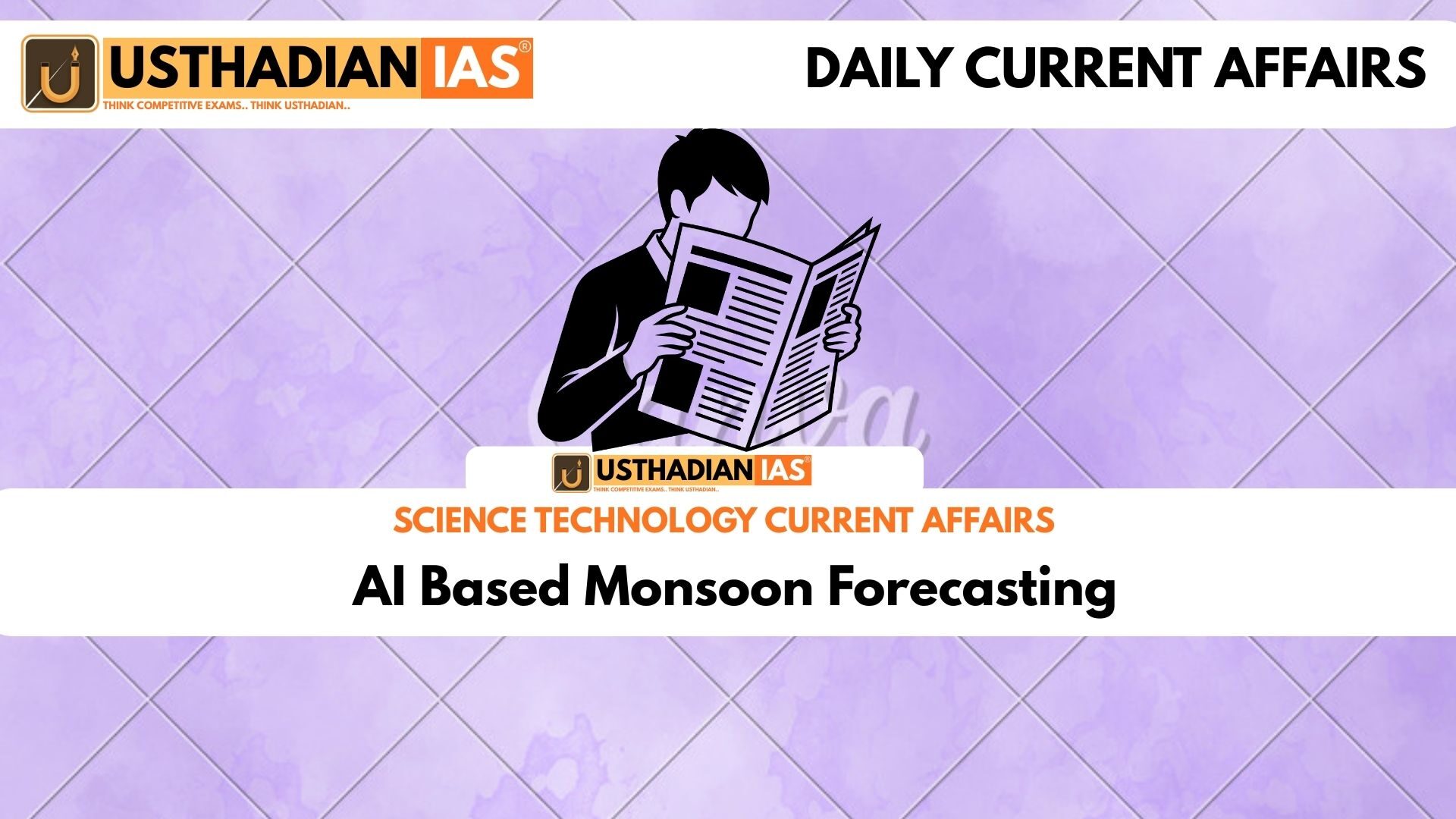AI revolution in weather forecasting
AI Based Monsoon Forecasting: Since 2022, artificial intelligence (AI) has been integrated into weather prediction to improve accuracy and relevance. Unlike traditional models, AI systems analyse vast climate datasets to forecast complex events such as the Indian monsoon several weeks in advance. The Ministry of Agriculture and Farmers’ Welfare collaborated with Google’s Neural GCM and the ECMWF’s Artificial Intelligence Forecasting Systems (AIFS) to generate these forecasts.
Static GK fact: The European Centre for Medium-Range Weather Forecasts (ECMWF) is an independent intergovernmental organisation established in 1975, based in Reading, UK.
Monsoon forecasts for farmers
In 2025, nearly 3.8 crore farmers across 13 states received personalised AI-based monsoon predictions via SMS through the m-Kisan platform. Forecasts included early warnings up to four weeks before rainfall and weekly updates during the season. Farmers were also alerted about a 20-day mid-season pause, enabling them to plan resources effectively. The forecasts were written in simple language to ensure accessibility and practical decision-making.
Static GK Tip: The m-Kisan portal was launched in 2013 to provide information services to farmers through SMS in regional languages.
Impact on kharif farming and livelihoods
India’s kharif crop cycle heavily depends on monsoon rains. Early AI forecasts gave farmers a clear advantage in choosing suitable crops and optimal sowing times. This reduced the risk of crop failure and improved income stability. In a country where nearly 50% of the workforce is dependent on agriculture, AI-driven weather insights directly strengthen rural livelihoods and food security.
Static GK fact: Kharif crops include paddy, maize, cotton, soybean, and groundnut, which are typically sown with the arrival of monsoon in June.
Building resilience with technology
Climate variability and extreme weather events have been increasing in recent years. AI-based forecasting acts as a resilience tool by allowing farmers to adapt quickly to unpredictable rainfall. It complements traditional knowledge while integrating modern science into everyday agricultural practices. The initiative marks the world’s first AI-powered monsoon forecasting service at this scale.
Future prospects
The Ministry plans to scale up the programme, expanding coverage and refining AI models for higher accuracy. Improved communication tools and farmer-friendly interfaces will further enhance adoption. By embedding AI into agricultural policy, India sets an example for leveraging technology to address climate challenges and safeguard farmer welfare.
Static Usthadian Current Affairs Table
AI Based Monsoon Forecasting:
| Topic | Detail |
| Launch year of AI forecasting in India | 2022 |
| Farmers reached through AI forecasts in 2025 | 3.8 crore |
| Number of states covered | 13 |
| Platform used for SMS dissemination | m-Kisan portal |
| Forecasting models used | Google Neural GCM and ECMWF AIFS |
| Unique forecast update in 2025 | 20-day mid-season pause alert |
| Ministry responsible | Ministry of Agriculture and Farmers’ Welfare |
| Key crop cycle supported | Kharif crops |
| Static GK fact on ECMWF | Established in 1975, based in UK |
| Static GK fact on m-Kisan | Launched in 2013 for farmer SMS services |








